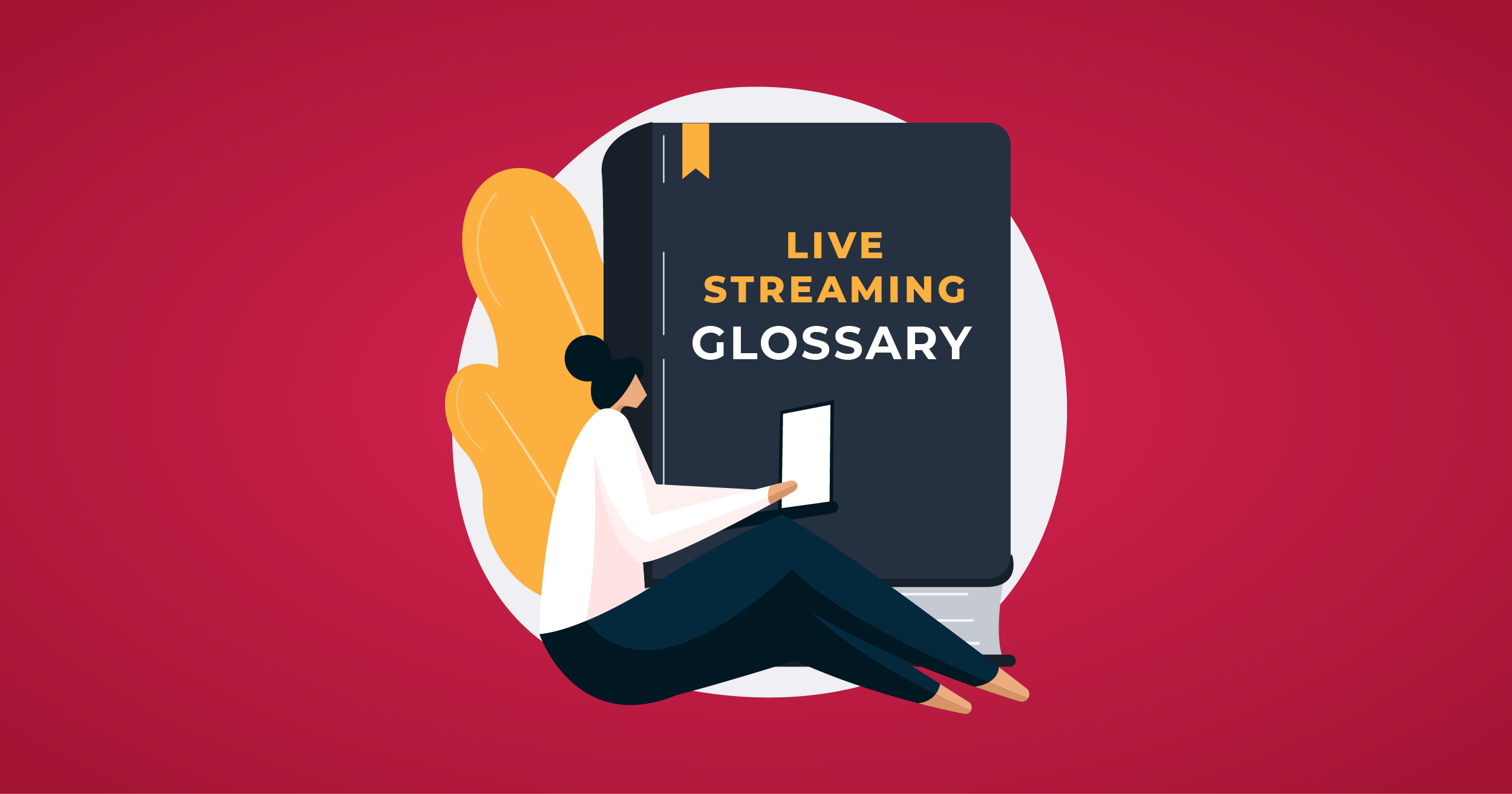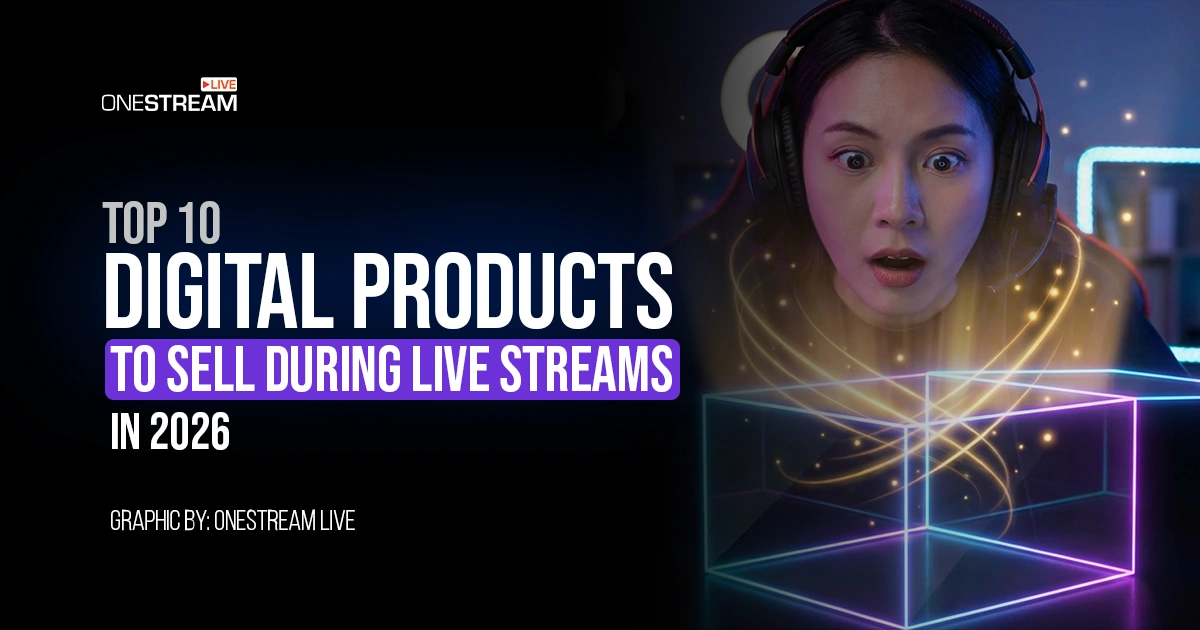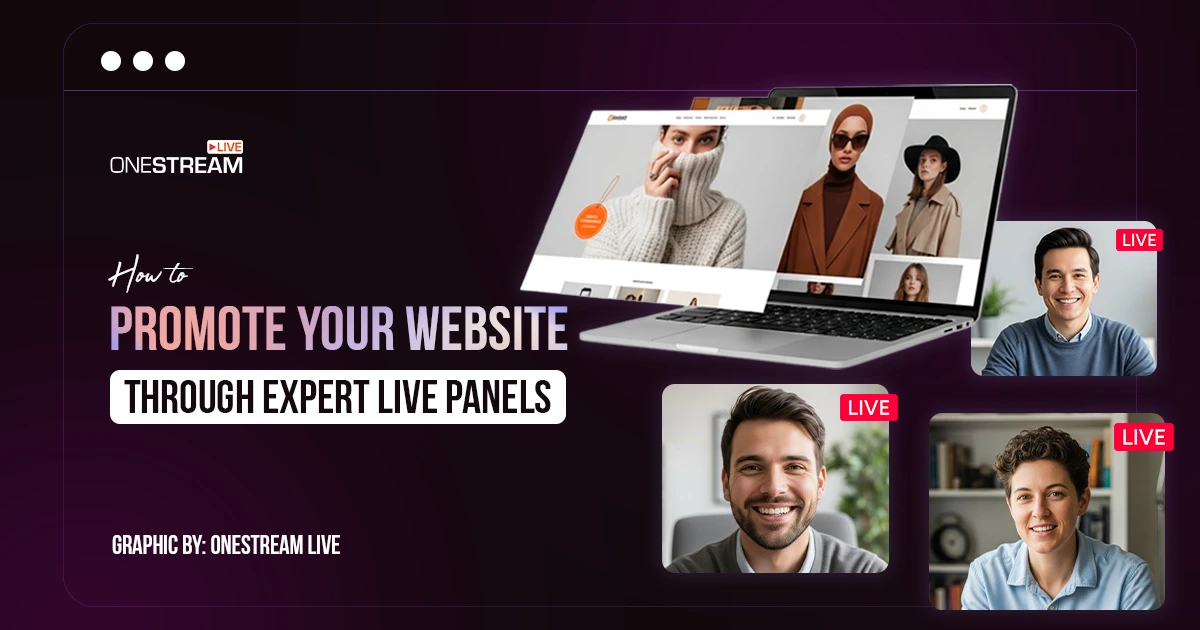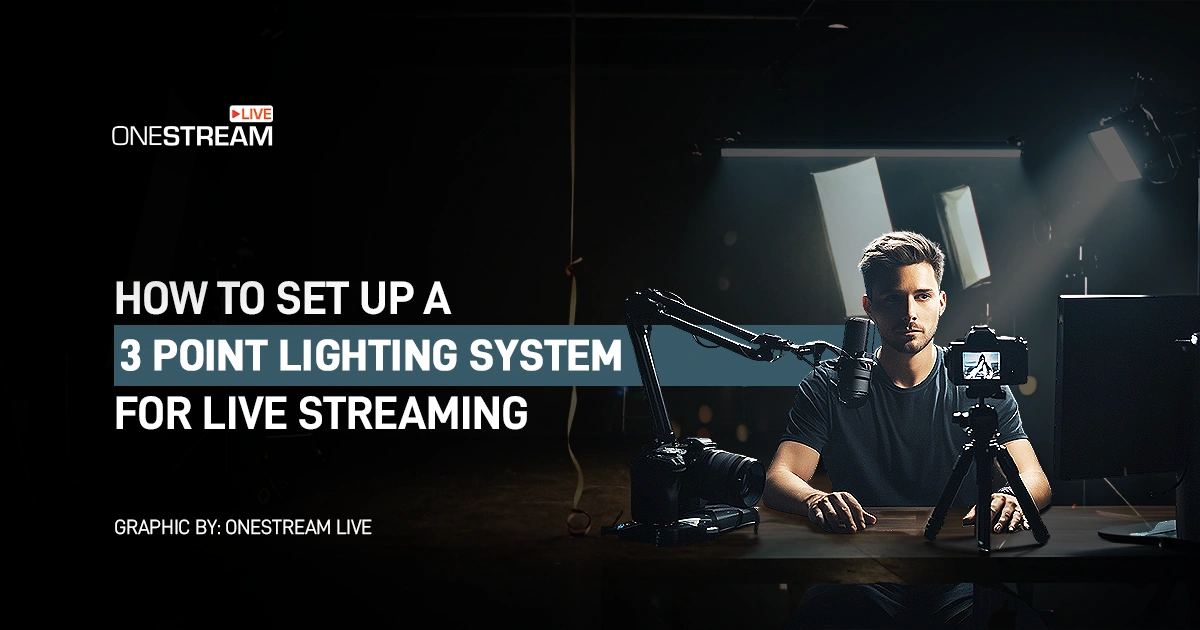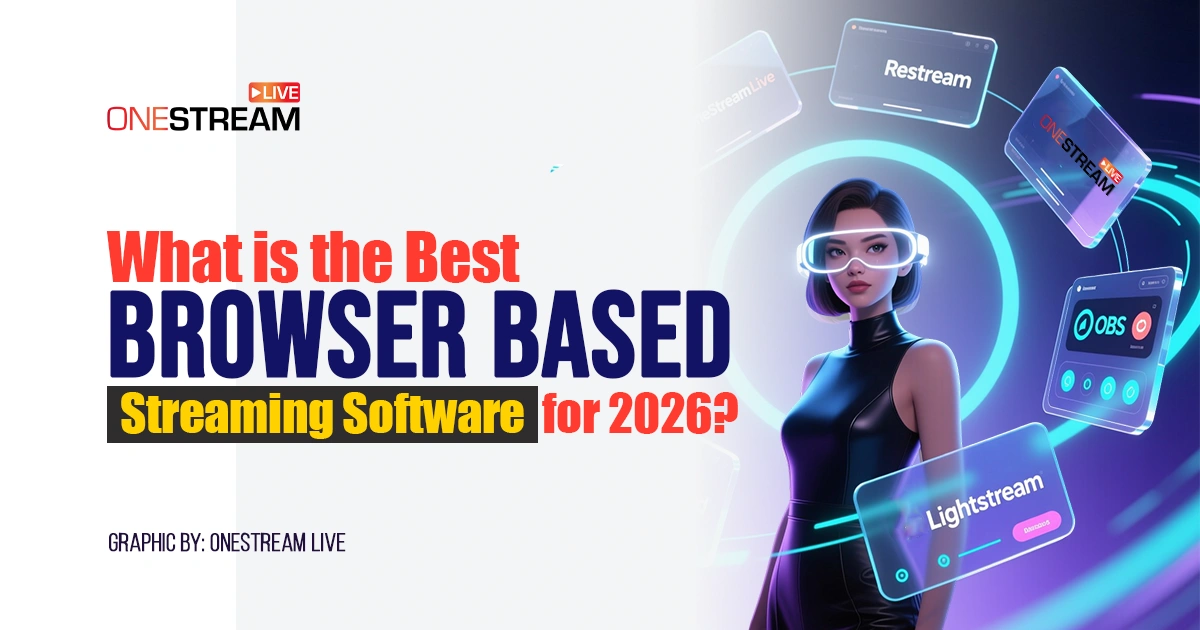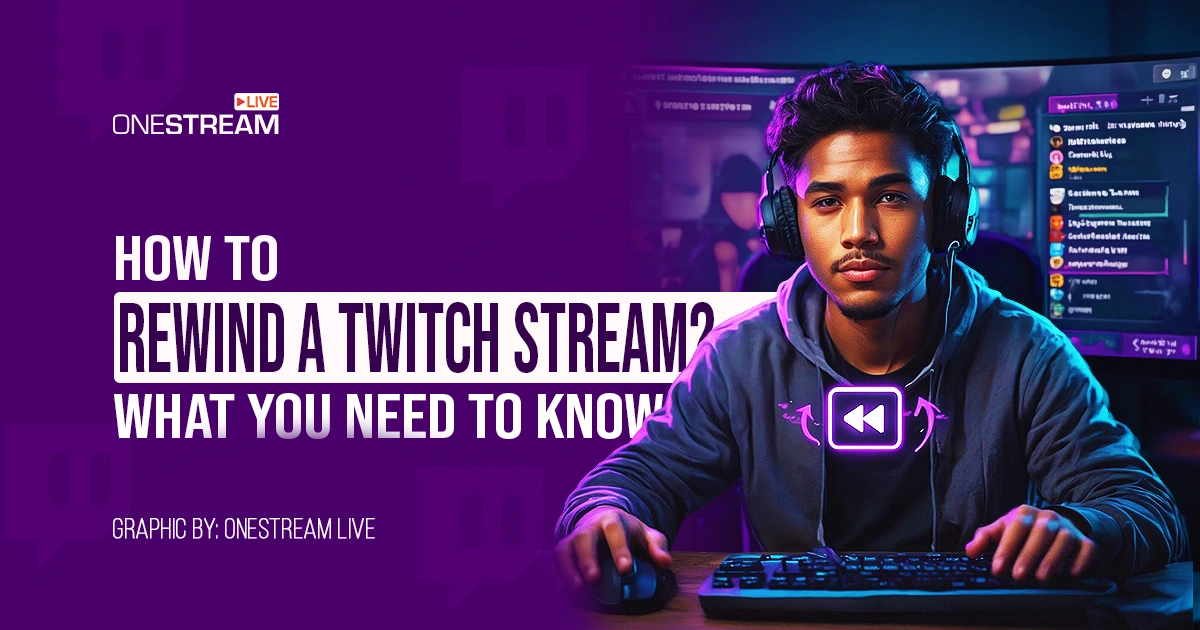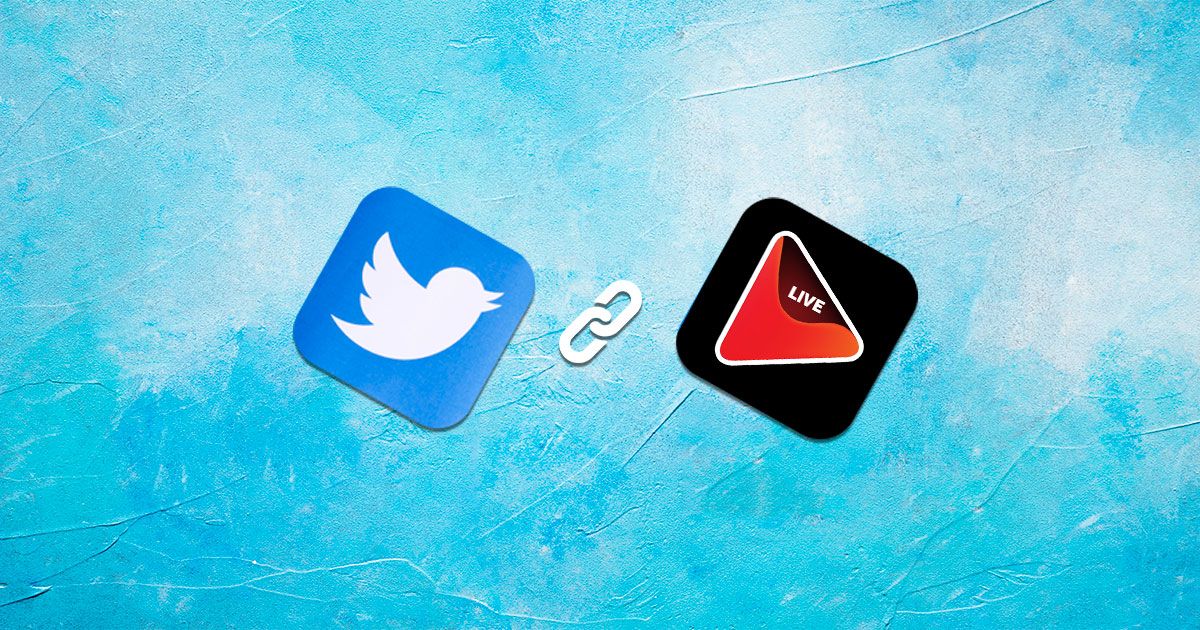Have you ever been bewildered by the multitude of complex terms within the realm of live video streaming? Well, we know that between RTMPs, encoding, and bitrates, the live streaming jargon can get too confusing. Luckily, the experts at OneStream Live have compiled a live streaming glossary of all the technical and most commonly used terms for all levels of professionals.
Without the right context, even the simple streaming video definition can feel challenging to grasp, but this glossary clears it up once and for all. And that clarity matters now more than ever as live streaming has become one of the fastest-growing forms of digital content, valued at $87.55 billion in 2023 and projected to reach $345.13 billion by 2030.
- This live streaming reference list simplifies complex streaming jargon into easy, practical terms for everyone.
- Terms like bitrate, bandwidth, resolution, latency, codecs, captions, and RTMP are simplified.
- Explore how OneStream Live brings these concepts together to help you stream smarter and easier.
What Are the Must-Known Terms in a Live Streaming Glossary?
A live streaming glossary is essential for any streamer entering the world of online broadcasting. It is crucial to understand these terms for smoother streams, solve technical difficulties faster, and make informed decisions for better audience experiences.
1. Live Streaming
The live streaming definition is simple: it’s the process of broadcasting video content over the internet instead of through satellite. The audience can watch the streaming content on their internet-enabled devices, be it their smartphones, laptops, or smart televisions.
Pro Tip: If you have the bandwidth and a tool like OneStream Live, you can multistream to 45+ social destinations at once. Go live 24/7 on YouTube, schedule and pre-record your videos, so you can go live even when you’re offline.
Read more: What is Multistreaming? Real-Time Streaming on All Platforms in 2025
2. Adaptive Bitrate
Adaptive bitrate allows the stream to adjust itself to the streaming device’s video specifications and speed. This means if the viewer’s internet is slow, the streaming video’s definition or resolution is automatically scaled down to 720p or 480p, etc.
Important information: If you plan to stream on Facebook, this platform recommends a video resolution no higher than 1080p. So to comply with their restrictions, OneStream Live will automatically reduce your video resolution to 1080p.
3. Advanced Audio Coding (AAC)
Advanced Audio Coding (AAC) is a method of compressing audio files so they take up less space, similar to MP3, but with improved sound quality. MPEG group (the team that sets standards for video and audio) created it as the next step after MP3.
AAC is now used on YouTube, iTunes, and streaming apps because it makes music and speech sound clearer even in smaller file sizes. OneStream Live recommends AAC for higher sound quality.
Read more: Recommended Video Settings for Live Streaming via OneStream
4. Bandwidth
Bandwidth refers to the amount of internet capacity provided by live streaming platforms to deliver your video and audio. It is usually measured in bits per second (bps), most often Mbps (megabits per second) or Gbps (gigabits per second).
In streaming terms, higher bandwidth implies smoother playback with better quality, like HD or 4K, while lower bandwidth often results in buffering, lag, or lower resolution.
OneStream Live includes a generous bandwidth allowance with its plans.
- Standard Plan → 1.5 TB of bandwidth
- Professional Plan → 2.5 TB of bandwidth
- Enterprise Plan → 5 TB of bandwidth
This allocation is refreshed on the first of each month, depending on your subscription.
Pro Tip: If your stream attracts a large audience and you exceed the included limit, OneStream Live offers CDN bandwidth add-ons, allowing you to scale without interruption.
5. Bitrate
Bitrate is the number of bits processed per second of the video. Simply put, it is the amount of data transferred per unit of time in a video. Hence, a higher bitrate means higher resolution and higher quality of the video.
Does this mean we should live-stream at the highest possible bitrate? Well, no.
From a streaming perspective, a higher video bitrate yields a higher-quality video. However, a high bitrate increases the size of the video and demands a great amount of bandwidth from the viewers for processing the information.
Important information: There’s no one-size-fits-all bitrate for live streaming; each platform has its own recommendations based on resolution. For example, YouTube recommends 1500–6000 Kbps for 720p/1080p, and Twitch allows 3000–6000 Kbps for 720p/1080p.
Read more: What is Bitrate? A Content Creator’s Guide to Video Quality
6. Buffering
It is the time lag between collecting video data and delivering it. Buffering occurs when the video is collecting additional data to play it properly and in high resolution. Slow internet speed is a leading cause of buffering.
In pre-recorded live streaming, buffering occurs in case the video doesn’t follow the recommended video specs. For real-time live streaming, your internet should be fast and stable. However, wrong preset settings of the third-party app may also cause buffering.
Pro Tip: OneStream Live servers are located worldwide. However, you are required to select the nearest RTMP server based on your location when streaming videos using an external RTMP source. This will ensure stream health and mitigate the risk of buffering.
7. Closed Captions (CC)
Closed captions are essentially the subtitles added to the video streams as a text overlay. Akin to transcription, closed captions assist hearing-impaired viewers or those who prefer to watch videos without audio.
To enhance the accessibility and reach of your live-stream content, you can generate subtitles using automated tools that streamline the transcription and syncing process.
Pro Tip: With OneStream Live, you can easily add captions to your videos. Just upload an SRT file, and your stream becomes more accessible and engaging.
8. Open Captions (OC)
Also referred to as hard-coded or baked/burnt captions, open captions are a permanent video content feature. That is, they cannot be switched off.
So what is the difference between closed and open captions? Closed captions offer flexibility and accessibility control to the viewer, while open captions ensure everyone sees the subtitles, no matter the platform or device.
9. Codec
A codec is a program or device capable of encoding or decoding digital information, including both audio and video, for easy transmission over the internet.
For smooth streaming on OneStream Live, always use supported codecs, H.264 video, and AAC audio in mp4, mov, or m4v formats. If your file isn’t compatible, you can quickly convert it online, download it, and then you’re ready to enjoy your stream.
10. Compression
Also referred to as video compression, it is the process of reducing the total number of bits needed to represent an image or video sequence. It is usually performed by special programs using video compression algorithms that reduce raw data by as much as a thousand times.
11. Content Delivery Network (CDN)
CDNs are a geographically distributed network of servers and data centers placed globally to facilitate the fast delivery of digital content. The video content from the streamer is transferred to the closest server, after which the cached content is delivered to the viewer.
12. Digital Video Recorder (DVR)
This is primarily a security system that is designed to block unauthorized access while allowing authorized communications. However, if not configured properly, this can cause significant issues when live streaming
A DVR is an electronic device that allows recording video in a digital format and stores it on a hard drive. It converts the analog signals captured by cameras into digital signals and stores them on the hard drive after compression.
YouTube’s DVR feature allows viewers to pause, rewind, and play the live stream from any point. Once the viewers resume playing, the live stream will start from where they have hit pause so that they won’t miss any part of the stream.
Read More: What is DVR (Digital Video Recording) Feature?
13. Encoder
Encoders are devices used to convert the video format of the source video into a compatible format that is playable on all devices. They also allow the streamers to use various bitrates to increase the reach of their devices.
OneStream Live supports mp4, mov, and m4v video files. Use the following settings to get the best live streaming results.
- Format: mp4
- Video codec: H.264 (AVC)
- Audio codec: AAC
- FPS: 60 max (higher fps may cause disruption)
- Video duration: At least 1 minute
- Orientation: Landscape, Portrait, Square
- Audio bitrate: 128 kbps
- Video bitrate: 1500–6000 kbps
- 360-degree video bitrate: 5000–10000 kbps
14. Encoding
Encoding is the most significant part of live streaming. It takes your stream and converts it into a file that can be streamed across the internet. Encoding is typically done using a third-party streaming software such as OBS or with a hardware encoder (discussed above).
15. Firewall
This is primarily a security system that is designed to block unauthorized access while allowing authorized communications. However, if not configured properly, this can cause significant issues when live streaming.
Read More: Protecting Your Live Streams: Cloud & Application Security Explained
16. High-Definition Multimedia Interface (HDMI)
HDMI is a connector and cable used to transmit both high-quality video and audio from your streaming device to an output screen, such as a monitor, TV, or projector.
In streaming setups, HDMI is what links your camera, console, or encoder to a capture card or display, ensuring smooth transmission of HD or 4K video with synchronized sound. It is a common standard for connecting high-definition (HD) devices at the consumer level.
17. Latency
Latency describes the time difference between real-time and online streaming. It is the time that elapses from when the data source sends a data packet until the destination receives it. Since both times are never the same, different features are deployed to minimize live streaming latency.
The latency issue is mainly caused by the user’s location and the load on the servers at the time of streaming. You can find latency by using the ping command here https://wondernetwork.com/pings/Helsinki. You can change the last string from Helsinki to your region to see the results.
18. Live Streaming Devices
These are devices that enable streamers to broadcast their video content online. They typically include an internet connection and recording equipment such as a video camera and microphone.
Pro Tip: OneStream Live allows you to add up to four cameras to your Live Studio sessions. Capture and stream every moment to share an immersive experience. Additionally, cloud-based streaming eliminates the need for expensive equipment and a complicated setup. Everything runs smoothly from your browser.
19. Live Streaming Platforms
These are platforms that offer the servers and space to store and distribute video content. They also provide features such as multistreaming, streaming analytics, branding options, captions, and subtitles, among others, to make streaming more engaging.
OneStream Live is one of the best streaming platforms because it combines reach, convenience, and innovation. Most importantly, it integrates a range of tools that no other live streaming service provides in a single platform.
20. Picture in Picture (PiP)
PiP is the ability to see multiple video sources simultaneously on one screen. On YouTube or Twitch, PiP allows viewers to keep watching a live stream while replying to messages or scrolling through feeds.
For streamers, it can also mean overlaying a small webcam feed on top of gameplay or presentations, so audiences see both the content and the host at once.
21. Playlist Streaming
This relates to creating a playlist of pre-recorded videos to go live at your pre-defined date and time. It makes a queue of videos that will go live on your desired date and time. OneStream Live offers an innovative playlist feature.
Read More: How to Create a Live Streaming Playlist with OneStream Live
22. Real-Time Messaging Protocol (RTMP)
RTMP is the most common streaming protocol, initially developed by Macromedia for streaming audio, video, and data over the internet. It is like a digital pipeline that carries your live video and audio from your computer or camera to a streaming platform (like YouTube, Facebook, or Twitch).
It allows you to stream video content to popular streaming destinations, using a stream key and URL. With external RTMP source Live Streaming, you can send a live stream to OneStream Live using any third-party tool like OBS, Zoom, XSplit, etc., and restream it to multiple connected social accounts (like Facebook, YouTube, etc.) at the same time.
23. Real-Time Streaming
Real-time streaming refers to the instant capture and delivery of audio and video as it happens. The data is delivered to a messaging system in real-time, immediately processed, and sent to the streaming destination.
Platforms like YouTube Live, Twitch, or Facebook Live use real-time streaming to let audiences watch and interact instantly.
24. Resolution
Screen resolution is the number of pixels in x (width) and y (length) dimensions for any display device, such as monitors, mobiles, and televisions. For example, 1920 x 1080 means the screen is 1920 pixels in width and 1080 pixels in height.
Essentially, the resolution is the size of your screen, so when you live stream, you configure a specific resolution to broadcast your video. Optimal video resolutions (width x height) for popular platforms:
- Facebook 1920 x 1080 (1080p)
- YouTube 1920 x 1080 (1080p)
- Twitch 1920 x 1080 (1080p)
- LinkedIn 1920 x 1080 (1080p)
25. Stream Key
What is a Stream Key? Your Ultimate Guide is the code used to identify the audio/video streaming source to embed the stream on the web. Your stream key is essentially the password that you need to stream your video to a specific RTMP server.
OneStream RTMP social account supports this feature. If you have the stream key of the destination platform, you can connect it to OneStream for live streaming and embed your streams on the web.
26. Video on Demand (VOD)
VOD is a programming system that allows viewers to select and watch their desired video content whenever they like, rather than tuning in at the scheduled broadcast time.
OneStream supports VOD. If you want your video to be deleted immediately after streaming, you can choose the Delete Stream/VOD option under Advanced Settings when creating a schedule.
27. 4K Streaming
Just like 720p or 1080p, 4K is a resolution for video content. 4K is an Ultra High Definition (UHD) video resolution with roughly four times the detail of standard HD.
It’s called “4K” because the image is about 4,000 pixels wide. That translates to a display resolution of approximately 3840 × 2160 pixels for consumer 4K/UHD, packing in over 8 million pixels per frame. By comparison, 1080p Full HD has about 2 million pixels (1920 × 1080).
Pro Tip: OneStream Live is designed to help creators get the most out of HD streaming, offering a smooth experience for both streamer and audience without requiring 4K.
Read more: What Is 4K Resolution? All About HD Streaming in 2025
FAQS: Live Streaming Glossary of Most Common Terms
Bitrate defines the amount of data used to encode a video stream, affecting its quality and load time for viewers.
RTMP (Real-Time Messaging Protocol) is crucial for transmitting live video and audio content from your encoder to a streaming platform.
Multistreaming enables you to broadcast your live content simultaneously to multiple platforms, such as YouTube, Facebook, and Twitch.
According to the livestream glossary, latency is the delay between when an event occurs and when it becomes visible to your viewers. Lower latency means faster audience interaction, while higher latency results in more delay in your broadcast.
A stream key is a unique code that links your streaming software to your platform. Find your stream key in the live streaming settings of platforms like YouTube or Facebook, then copy it. Paste the key into your streaming software (OBS, OneStream Live, etc.), and you’re ready to go live.
Standard Definition (SD) streaming means broadcasting video at lower resolutions, typically 480p (640×480 or 720×480 pixels). It uses less internet bandwidth compared to HD or 4K.
OneStream Live is a cloud-based live streaming solution to create, schedule, and multistream professional-looking live streams across 45+ social media platforms and the web simultaneously. For content-related queries and feedback, write to us at [email protected]. You’re also welcome to Write for Us!

